
Nightjars are medium-sized nocturnal or crepuscular birds in the family Caprimulgidae and order Caprimulgiformes, characterised by long wings, short legs, and very short bills. They are sometimes called goatsuckers, due to the ancient folk tale that they sucked the milk from goats, or bugeaters, their primary source of food being insects. Some New World species are called nighthawks. The English word "nightjar" originally referred to the European nightjar.
Near passerines and higher land-bird assemblage are terms of traditional, pre-cladistic taxonomy that have often been given to tree-dwelling birds or those most often believed to be related to the true passerines owing to morphological and ecological similarities; the group corresponds to some extent with the Anomalogonatae of Alfred Henry Garrod.
The Sibley–Ahlquist taxonomy is a bird taxonomy proposed by Charles Sibley and Jon E. Ahlquist. It is based on DNA–DNA hybridization studies conducted in the late 1970s and throughout the 1980s.
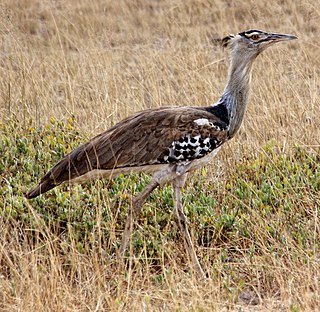
Otidae is a clade that includes the superorders Otidimorphae and Strisores. It was identified in 2014 by genome analysis. Earlier it was thought that Strisores was closely related to birds such as pigeons, flamingos, tropicbirds, and the sunbittern and kagu in the taxon Metaves, but subsequent work has provided evidence that Metaves is polyphyletic. Although analyses of genome data provided relatively high support for monophyly of Otidae, indicating that it occupies a basal branch of the clade Passerea, other analyses of large data matrices have not recovered a clade comprising Otidimorphae and Strisores, raising questions about the monophyly of Otidae.

Owlet-nightjars are small crepuscular birds related to the nightjars and frogmouths. Most are native to New Guinea, but some species extend to Australia, the Moluccas, and New Caledonia. A flightless species from New Zealand is extinct. There is a single monotypic family Aegothelidae with the genus Aegotheles.
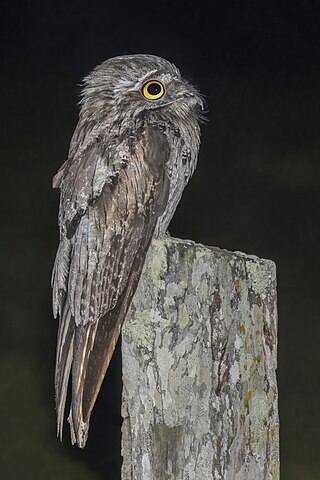
Potoos are a group of birds related to the nightjars and frogmouths. They are sometimes called poor-me-ones, after their haunting calls. The family Nyctibiidae was formerly included with the nightjars in the order Caprimulgiformes but is now placed in a separate order, Nyctibiiformes. There are seven species in two genera in tropical Central and South America. Fossil evidence indicates that they also inhabited Europe during the Paleogene.

The frogmouths are a group of nocturnal birds related to owlet-nightjars, swifts, and hummingbirds. Species in the group are distributed in the Indomalayan and Australasian realms.
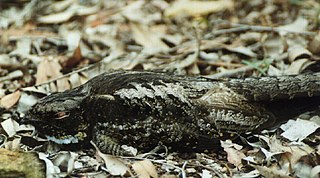
The eared nightjars are a small group of nocturnal birds in the nightjar family, although the taxonomy is uncertain. There are seven species, mainly found in forest and scrub from China to Australia. Five species are placed in the genus, Eurostopodus, the other two species in Lyncornis. They are long winged birds with plumage patterned with grey and brown to camouflage them when resting on the ground. They feed on insects caught in flight. A single white egg is laid directly on the ground and incubated by both adults. The chicks can walk soon after hatching.

The great eared nightjar is a species of nightjar in the family Caprimulgidae. It is found in southwest India and in parts of Southeast Asia. This very large nightjar has long barred wings, a barred tail and long ear-tufts which are often recumbent. It has a white throat band but has no white on its wings or on its tail.

Neoaves is a clade that consists of all modern birds with the exception of Paleognathae and Galloanserae. Almost 95% of the roughly 10,000 known species of extant birds belong to the Neoaves.

Apodimorphae is a clade of strisorean birds that include the extant families Trochilidae (hummingbirds), Hemiprocnidae (treeswifts), Apodidae (swifts), and Aegothelidae (owlet-nightjars), as well as many fossil families. This grouping of birds has been supported in a variety of recent studies. There are two higher classification schemes that have been proposed for the apodimorph families. One is all strisorean birds are classified in the order Caprimulgiformes, while the other is the strisorean birds are split into several distinct orders. In this case Apodimorphae is a subclade of Strisores that includes the orders Aegotheliformes and the Apodiformes. A similar name for the group Daedalornithes has been used for the owlet-night-apodiform clade, there is a difference between the two names with Apodimorphae defined as the total-group and Daedalornithes defined as the crowned group.

Aequornithes, or core water birds, are defined as "the least inclusive clade containing Gaviidae and Phalacrocoracidae".
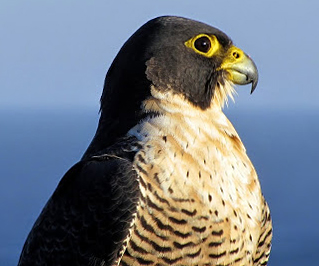
The order Falconiformes is represented by the extant family Falconidae and a handful of enigmatic Paleogene species. Traditionally, the other bird of prey families Cathartidae, Sagittariidae (secretarybird), Pandionidae (ospreys), Accipitridae (hawks) were classified in Falconiformes. A variety of comparative genome analysis published since 2008, however, found that falcons are part of a clade of birds called Australaves, which also includes seriemas, parrots and passerines. Within Australaves falcons are more closely related to the parrot-passerine clade (Psittacopasserae), which together they form the clade Eufalconimorphae. The hawks and vultures occupy a basal branch in the clade Afroaves in their own clade Accipitrimorphae, closer to owls and woodpeckers.

Antrostomus is a genus of nightjars formerly included in the genus Caprimulgus. They are medium-sized nocturnal birds with long pointed wings, short legs and short bills.

Strisores, sometimes called nightbirds, is a clade of birds that includes the living families and orders Caprimulgidae, Nyctibiidae (potoos), Steatornithidae (oilbirds), Podargidae (frogmouths), Apodiformes, as well as the Aegotheliformes (owlet-nightjars) whose distinctness was only recently realized. The Apodiformes and the Aegotheliformes form the Daedalornithes.

Lyncornis is a genus of eared nightjar in the family Caprimulgidae.

Telluraves is a recently defined clade of birds defined by their arboreality. Based on most recent genetic studies, the clade unites a variety of bird groups, including the australavians as well as the afroavians. They appear to be the sister group of the Ardeae.

Passerea is a clade of neoavian birds that was proposed by Jarvis et al. (2014). Their genomic analysis recovered two major clades within Neoaves, Passerea and Columbea, and concluded that both clades appear to have many ecologically driven convergent traits.
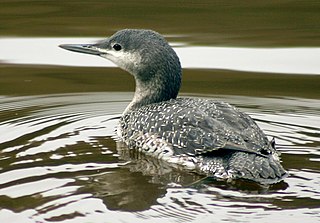
Phaethoquornithes is a clade of birds that contains Eurypygimorphae and Aequornithes, which was first recovered by genome analysis in 2014. Members of Eurypygimorphae were originally classified in the obsolete group Metaves, and Aequornithes were classified as the sister taxon to Musophagiformes or Gruiformes.

Columbimorphae is a clade discovered by genome analysis that includes birds of the orders Columbiformes, Pterocliformes (sandgrouse), and Mesitornithiformes (mesites). Previous analyses had also recovered this grouping, although the exact relationships differed. Some studies indicated a sister relationship between sandgrouse and pigeons while other studies favored a sister grouping of mesites and sandgrouse instead.
















